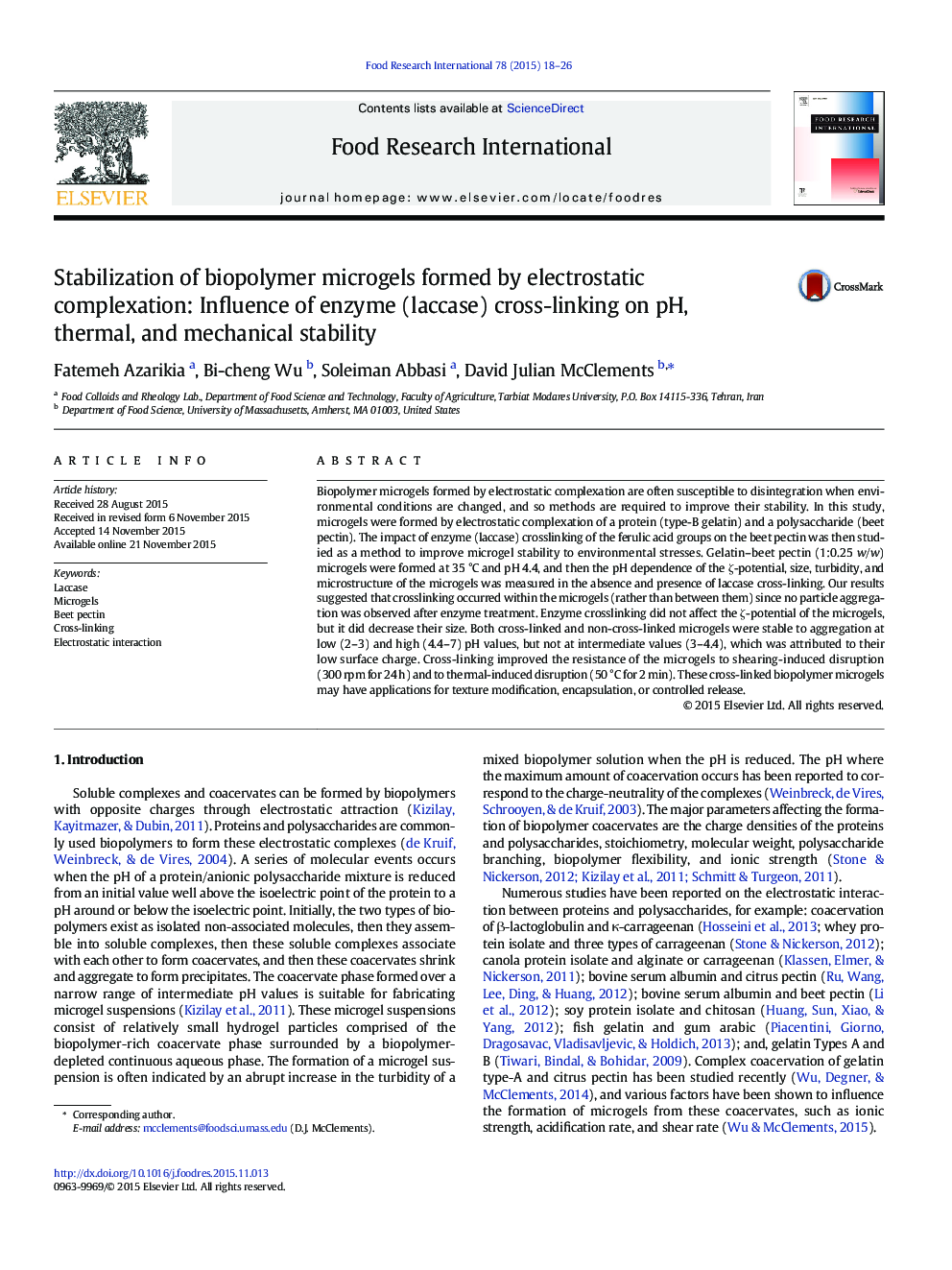| کد مقاله | کد نشریه | سال انتشار | مقاله انگلیسی | نسخه تمام متن |
|---|---|---|---|---|
| 4561289 | 1628470 | 2015 | 9 صفحه PDF | دانلود رایگان |

• Microgels were formed by electrostatic interaction of gelatin and beet pectin.
• Protein:polysaccharide ratio had a major impact on microgel size and properties.
• Laccase crosslinking improved the shear- and heat-stability of microgels.
• The formed microgels may be useful for delivery systems or texture modifiers.
Biopolymer microgels formed by electrostatic complexation are often susceptible to disintegration when environmental conditions are changed, and so methods are required to improve their stability. In this study, microgels were formed by electrostatic complexation of a protein (type-B gelatin) and a polysaccharide (beet pectin). The impact of enzyme (laccase) crosslinking of the ferulic acid groups on the beet pectin was then studied as a method to improve microgel stability to environmental stresses. Gelatin–beet pectin (1:0.25 w/w) microgels were formed at 35 °C and pH 4.4, and then the pH dependence of the ζ-potential, size, turbidity, and microstructure of the microgels was measured in the absence and presence of laccase cross-linking. Our results suggested that crosslinking occurred within the microgels (rather than between them) since no particle aggregation was observed after enzyme treatment. Enzyme crosslinking did not affect the ζ-potential of the microgels, but it did decrease their size. Both cross-linked and non-cross-linked microgels were stable to aggregation at low (2–3) and high (4.4–7) pH values, but not at intermediate values (3–4.4), which was attributed to their low surface charge. Cross-linking improved the resistance of the microgels to shearing-induced disruption (300 rpm for 24 h) and to thermal-induced disruption (50 °C for 2 min). These cross-linked biopolymer microgels may have applications for texture modification, encapsulation, or controlled release.
Journal: Food Research International - Volume 78, December 2015, Pages 18–26